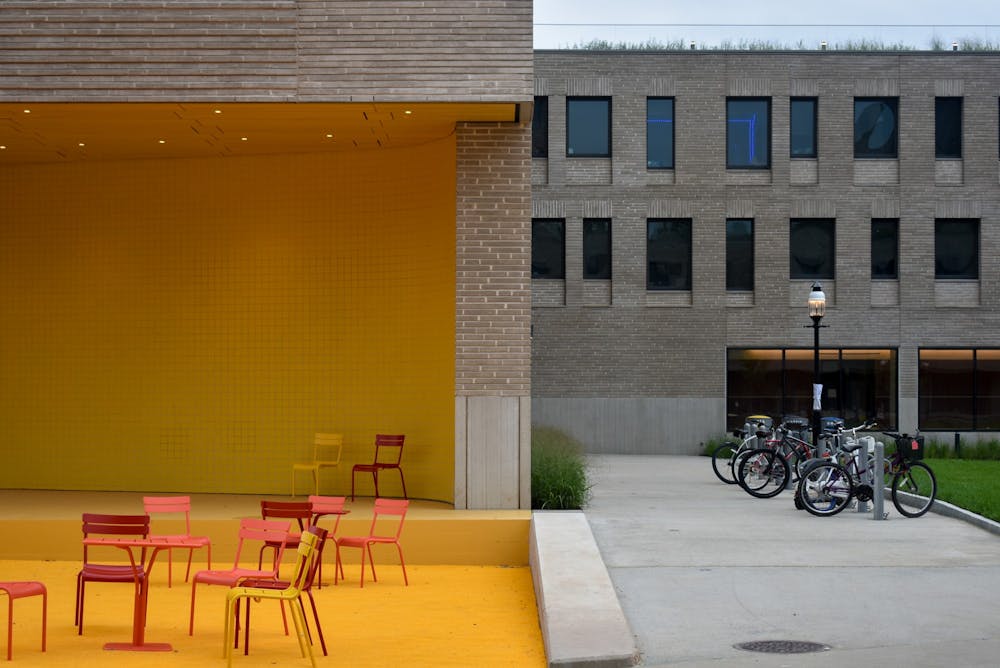Nothing has disappointed me more than Princeton’s recent architectural failures. New College West and Yeh look terrible: They are dull, rectangular, and prison-like. And as columnist Julianna Lee recently argued, the yet-to-be-built Hobson College is poised to continue this mistaken trend. Princeton’s new architectural style — if one can even call it style — represents a cultural and architectural decline at Princeton.
Without getting into the metaphysical debate of what defines beauty, it is undeniable that the neo-Gothic style that constitutes the hallmark of Princeton’s campus aesthetic is beautiful. These buildings, constructed in the first half of the twentieth century, are exemplary models of design excellence and master artisanry. The sheer complexity of these structures is astonishing. No two bricks are the same as each varies in color, texture, and size. Elaborate gargoyles, intricate figures, and stony beasts can be seen dotted around campus grounds.
Every entry door in Little Hall has a unique door frame. Dinosaurs embellish Guyot Hall, home to the Department of Geosciences. The “Chained Dragon” from the French legend of La Gargouille surrounds the doorways of the University Chapel. Stunning floral patterns embellish the keystones of the Rockefeller College arches. In fact, each ornate decoration, figure, arch, and crest has not only aesthetic and artistic beauty, but also metaphorical significance. It is for this reason that the neo-Gothic buildings on campus are considered a beautiful work of art: They all have at least one elaborate attribute that symbolizes something greater than the material qualities of the structures themselves. Art is an expression of an abstraction portrayed through physical means.
Now, what did it take to create the aesthetic of Princeton’s new residential colleges? Hardly anything of artistic or architectural merit. Monochrome, boring, ugly, and homogenous are fitting descriptions of Princeton’s newer residential colleges. The buildings’ monochrome brick walls look like they were copy-pasted, and the buildings themselves are void of the artistic beauty that Princeton is known for. Why settle for less?
I will concede that New College West and Yeh College have thoughtfully designed amenities. I will even go as far as to admit that the two colleges’ ground floors, with their tall glass planes, colorful chairs, and good lighting design, are pleasant, both from an architectural and practical standpoint. The ground floor interior adds a touch of modernity to Princeton’s campus. The problem is everything above and outside the ground floors: The dull, monochrome concrete slabs stacked four stories high, piercing the sky with their jagged edges, detracting from the beauty of the natural landscape surrounding the area and diminishing the architectural value of Princeton’s campus. When people come to visit Princeton, they are impressed by its architectural qualities. People take pictures at Blair Arch, Nassau Hall, and Rockefeller College, but not, that I have observed, at Yeh College or New College West.
A revival of the traditional aesthetic was certainly a possible option. In fact, the proposed Dillon Gym expansion is a great example. Other campuses like Yale University have opened new residential buildings that look phenomenal. Princeton had the opportunity to recreate its traditional neo-Gothic style, as it did with Whitman College. It also had the opportunity to combine modernity and a traditional gothic-inspired design, as it did with the Julis Romo Rabinowitz Building, which is a perfect example of a beautiful blend between modern and gothic styles. A simple glance at the building reveals the perfect mélange of modernity and gothic traditions: The stunning, modern glass panes and horizontal beams thoughtfully complement the neo-Gothic features of the building.
Instead of being a leader in novel collegiate architectural styles and creating a building with as much artistic and architectural merit as the older parts of campus, Princeton decided to settle with less. With Hobson College yet to have undergone major construction, one can only hope that Princeton will change its course.
Prince Takano is a junior from Los Angeles, California majoring in Politics.








